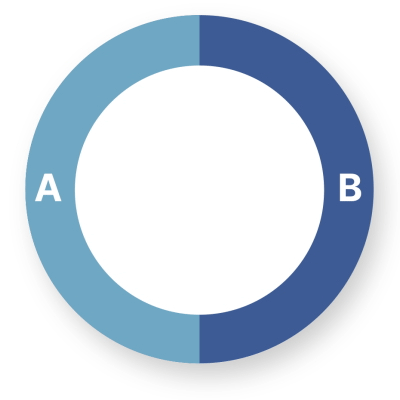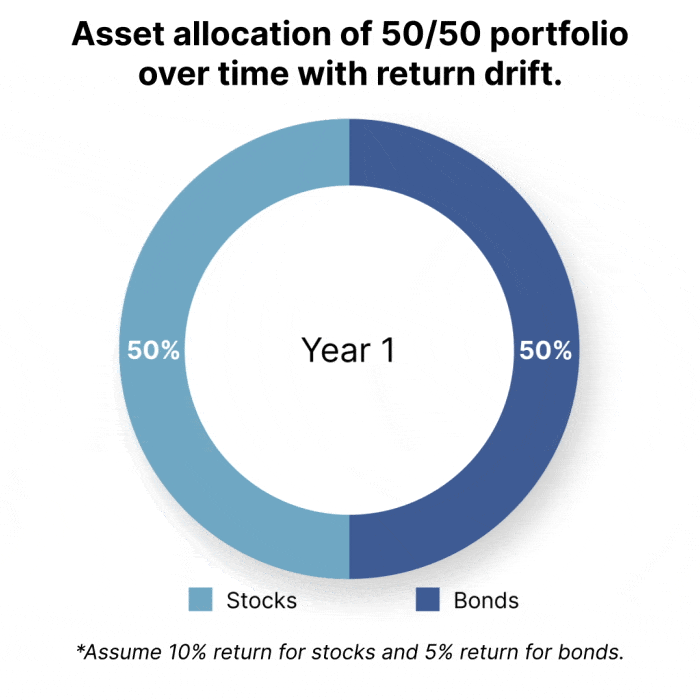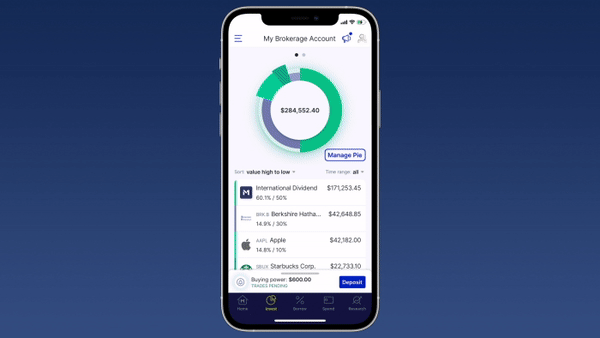Everything you need to know about automatic rebalancing

Choosing your investments is more than selecting stocks of companies with high growth potential, large dividend yields, or low price-to-earnings ratios.
When you select your investments, you not only choose which securities you own and how many shares you own of each, but either wittingly or unwittingly set each as a portion of your overall portfolio. As you do so, you inherently define your risk-return profile.
This is because some assets are inherently riskier than others, with greater potential for returns. Others carry less risk, but also provide less opportunity for larger returns. The securities you choose and the portion each accounts for in your overall portfolio should align with your investment goals and risk tolerance. For example, an individual with high risk tolerance or long investment horizon may invest more money in stocks, while an individual with lower risk tolerance or a shorter timeline may invest a larger percent of their money in bonds. This same principle applies within asset classes, as well, with some stocks carrying more risk than others.
The targets you set for each security in your portfolio ultimately make up your asset allocation. In other words, if 70% of the money in your portfolio is invested in stocks and the other 30% is invested in bonds, your asset allocation is 70/30.
What is rebalancing and what are the benefits?
Over time, some securities in your portfolio will potentially earn more in returns or dividends while others earn less, thus altering your overall asset allocation. Rebalancing is the process of bringing these investments back to your original targets to maintain the risk-return profile you initially set for your portfolio.
Think of it like this:
Let’s say your portfolio consists of two stocks, each set to 50% of your overall portfolio: Stock A and Stock B. Stock A is a growing tech stock with higher risk and higher potential for reward, and Stock B is a blue-chip industrial stock with stable earnings — a safer investment with less potential for outsize returns.
Suppose that after one year, Stock A earned higher returns than Stock B, and now accounts for 60% of your overall portfolio rather than 50%. Stock B now accounts for 40%.

Your risk-return profile has now shifted in favor of the riskier security. If you wish to keep your portfolio aligned with your portfolio goals and risk tolerance, you’ll want to rebalance and bring each stock back to 50% of your portfolio and maintain your chosen risk-return profile.
So why rebalance your portfolio? Long story short: rebalancing keeps your portfolio on track and ensures it doesn’t skew toward too much risk or too little reward.

So what’s the problem?
As you can see, rebalancing is a powerful tool allowing investors to stay on track with their financial goals. However, it is not without pitfalls of its own.
First, rebalancing can often be time intensive, requiring investors to manually calculate each individual trade to bring each individual security back to its desired target weight in the overall portfolio.
And then there are the trades themselves. Depending on your brokerage, these may be costly. The more out of alignment your assets are, the more buy and sell orders you’ll need to place to bring them back to your targets, and the more trades on which you may need to pay commissions. And that’s to say nothing of the taxconsequences that result from placing this many individual trades.
As a result, frequent rebalancing may result in high costs that eat away at your returns. On the other hand, rebalancing too infrequently may skew your risk exposure. So what’s the best strategy?
Rebalancing strategies
Traditionally, investors typically use one of two rebalancing strategies.
The first is time-based, which means rebalancing occurs at a set time interval, such as once per months, quarter, or year. This provides opportunity to check in on your portfolio periodically, but may not always fall at the ideal time.
For example, rebalancing too often may expose you to additional trade costs and taxes unnecessarily. Rebalancing too seldom may throw your risk-return ratio completely out of whack. Thus, time-based rebalancing, though consistent, may be a bit arbitrary.
On the other hand, investor may use drift-based rebalancing methods, meaning they rebalance their portfolio when their actual percentage for an asset drifts outside of a predetermined band, for example, 5% or more outside its target.
This reduces the likelihood of unnecessary rebalancing but does nothing to negate the adverse effects of rebalancing.
Automatic rebalancing
Many investors use automatic rebalancing to maintain their target asset allocation without the extra time and cash suck of frequent manual rebalancing.
Automatic rebalancing can take many forms, but generally allows you to schedule or automate a rebalance of your portfolio without manually calculating and placing trades. This is typically done on a time- or drift-basis, with some platforms allowing investors to set intervals for rebalancing their portfolio. While this removes the time-intensive, manual calculations portion of the process, it maintains the arbitrary nature of time-based rebalancing, and does nothing to reduce trade costs or save you on taxes.
At M1 Finance, we’ve transformed the process of rebalancing entirely, to reduce not only time spent rebalancing but also to reduce costs and allow you to rebalance more efficiently, so your portfolio is always on track. Rather than automatic rebalancing, we call this Dynamic Rebalancing, and it is seamlessly woven into M1’s intelligent automation.

Rather than setting a schedule for rebalancing, M1 intelligently and automatically rebalances your portfolio little by little as you deposit and withdraw cash from your portfolio. So if one of your securities is underweight in relation to your target, more money will flow into that asset when you make a deposit.
The result? Not only do you skip manually calculating and placing trades, but you also avoid the tax consequences of selling. Every time you invest, you’re also balancing out your portfolio and bringing each investment closer to its target. And because rebalancing happens little by little with each deposit and withdrawal, your risk exposure stays more consistent over time, so you’re always invested exactly how you want.
Another key difference? Manual and automatic rebalancing also tend to cost investors, who pay commissions to place trades, even if these trades are taking place automatically.
M1, on the other hand, charges no commissions or management fees, so Dynamic Rebalancing takes place completely for free on the platform. That means you enjoy all of the benefits of automatic rebalancing, and none of the drawbacks (save for taxes you’d be paying to deposit money and buy shares, anyway). Your portfolio risk-reward profile stays on target, and you stay on track to meet your financial goals while saving time and money.
Related articles
5 reasons penny stocks aren’t worth the money (and what to buy instead)
- Categories
- Invest




